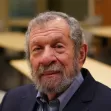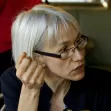Community / Economic Development

Poor Suburbs Struggle with Job Sprawl
Although unemployment has declined, according to this report commutes are getting longer. "Job sprawl" often plagues minority and poor areas where housing is more affordable.

Proposed Boulder Food Park Faces Zoning Challenges
The proposed Boulder Food Park repurposes a decrepit site into usable space for food truck patrons. Since the site is adjacent to a brick-and-mortar restaurant, a zoning exemption may be required.

Trendy Chicago Taco Bell to Serve Alcoholic Drinks
Would you like a cerveza with that? A hip neighborhood in Chicago will play host to the first alcohol-serving Taco Bell. Isolated incident, or the future of fast food?

How Kansas City Over-Subsidized Downtown
Eager for downtown development, Kansas City signed a deal subsidizing Cordish Companies to the tune of $295 million. The rejuvenated district should be self-sustaining. So why is the city still funding Cordish?
Citizen Planning Academies Build Capacity for Local Planning
Citizen Planning Academies build local leadership, increase awareness, and broaden involvement through community education. CommunityMatters highlights examples of citizen academies along with five reasons to start one in your city or town.
How Cities Are Stopping the Blight Contagion
Every city with neighborhoods in decline and a lack of demand for new investment is faced with the challenge of how to address blight. Each city's challenges are unique, but many are finding new and effective strategies to end the spread of blight.

Does $15 an Hour Mean Higher Rents?
Los Angeles will raise its minimum wage incrementally to $15 an hour by 2020. But with an inadequate supply of new housing, will this new spending power simply enable landlords to charge more? Some economists say yes.
'Melting-Pot Suburbs' Growing in Prominence
Analysis from the Brooking Institution maps the so-called melting-pot suburbs, where demographics closely resemble the diverse population of the country as a whole.

Three Reasons to Use Livability as a Vehicle for Sustainability
Meghan Gough, assistant professor at the Virginia Commonwealth University, guest blogs about her work on balancing livability and sustainability.
On the Ground in the Effort to Save Detroit's Neighborhoods
As Detroit's efforts to stabilize its neighborhoods progress, valuable lessons and trends are emerging. One particularly bright spot was recently revealed: fewer homes are in need of demolition than originally thought.

The Wisdom of Taxing Land for What It's Worth
Most cities in the United States tax land according to what an owner builds on it. That's great if you're an owner, but lousy if you're a city that wants something cool built on it. The solution: tax it according to what an owner can build on it.
Drought Exacerbates Conflict Between Cattle and Almonds in California's Central Valley
Sasha Khokha takes an in-depth look at the conflicting interests of cattle and almond businesses in California's Central Valley.

Does Wisconsin Governor Scott Walker Have a Bicycle Vendetta?
Walker wants to do away with Wisconsin's 2009 "complete streets" law and add a $25 retail tax to anyone purchasing a bike. Could this be because his re-election opponent was a former Trek Bicycle executive, or is he just anti-bike?
Happy Hour Anyone? Mapping Liquor Licenses and Crime in Dallas
Questions of how to regulate the sale of alcohol, how to enforce public intoxication, and whether or not alcohol leads to crime can quickly divide communities into factions. So what evidence exists to help cities answer these questions?
Grant Funding Rewards Innovation in Community Engagement
The Citi Foundation and Living Cities announced $3 million in grant funding to help cities adopt innovative practices in community engagement. Albuquerque, Atlanta, Baltimore, New Orleans, and Seattle will have 18 months to empower citizens.

China's Inland Cities Hit Their Stride
China has added to the ranks of the world's megacities at a ridiculous clip. Even so, inland cities have tended to languish in anonymity. With new policies and economic orientations, the Chonquings are starting to compete with the Shanghais.
Questioning the Wisdom of Crowd Funding
After a splashy project recently hit its crowdfunding goals, one write dares to suggest that such fund raising methods might not be the best idea.
Wanted: An Architectural Icon to Capture the Essence of Portland
On op-ed in the Oregonian makes the case for Portland to design and build a unique architectural icon that differentiates the city from its rivals in the Pacific Northwest.

Why Bikeshare Doesn't Appeal to Low-Income Commuters
While bikeshare garners a lot of attention from the white and wealthy, it is a less obvious choice for low-income communities. Difficulties include weather, time constraints, and overall demand for non-auto modes.
Study: Golden State Should Change Name to Greenest State
California's economy is not only the "least carbon-intensive" in the United States, it's the second lowest in the world when measured per economic output, according to a new study that evaluates economics and environment.
Pagination
Urban Design for Planners 1: Software Tools
This six-course series explores essential urban design concepts using open source software and equips planners with the tools they need to participate fully in the urban design process.
Planning for Universal Design
Learn the tools for implementing Universal Design in planning regulations.
City of Fort Worth
planning NEXT
Mpact (founded as Rail~Volution)
City of Camden Redevelopment Agency
City of Astoria
City of Portland
City of Laramie


































